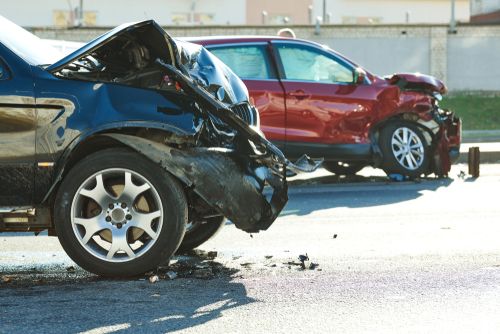 The main causes of car collisions may include driver error or elements beyond their control.
The main causes of car collisions may include driver error or elements beyond their control.
For a free legal consultation, call 631-451-7900
Six Main Causes of Car Collisions
Car collisions can be caused by driver errors, vehicle failures, and roadway and atmospheric conditions. Some of these elements may or may not be within the driver’s scope of control. Typically, there are six leading causes of car accidents:1. Recognition Errors
From the Encyclopedia of Clinical Neuropsychology, recognition errors are caused by one’s inability to identify the presence of a mistake. Typically, it is something that the driver does not realize until he or she is making the error or after it happened. From the National Highway Traffic Safety Administration (NHTSA), recognition errors account for roughly 41 percent of crashes. Examples of recognition errors are primarily related to distracted driving, such as daydreaming, texting, and not paying attention to one’s surroundings.2. Decision Errors
From the National Safety Council (NSC), decision errors occur when the driver arrives at the wrong conclusion regarding the choice of action to take. Anger, lack of information, and impatience can inflame decision errors. Decision errors account for roughly 33 percent of crashes, per the NHTSA. Examples of decision errors include aggressive driving, speeding, and intentionally disobeying traffic signals.3. Performance Errors
A performance error is an improper execution of motor responses when operating a car. Hand-eye coordination and movement control are an essential part of driving. Performance errors account for roughly 11 percent, per the NHTSA. Examples of performance errors include overcompensation and improper directional control.4. Non-Performance Errors
Non-performance may also cause driver-attributed errors. These are typically out of the driver’s control and were not able to foresee them happening. These types of errors cause seven percent of driver-related collisions. Non-performance errors account for roughly seven percent of crashes, per the NHTSA. Examples of non-performance errors include falling asleep, per the NSC.5. Vehicle Failures
Vehicle failures happen when the car does not perform as expected when used correctly. Vehicle failures cause less than two percent of car crashes, per the NHTSA. Examples of vehicle failures include tires or wheel degradation, brake malfunctions, and major systems failures, such as steering, suspension, transmission, and engine.6. Roadway and Atmospheric Conditions
Roadway conditions describe the state of the road on which a driver is traveling. Examples of poor roadway conditions include slick roads, view obstructions, traffic signs and signals, and road design. Atmospheric conditions are the states of the weather and atmosphere at the time of the collision. Examples of roadway conditions include fog, rain, and snow, making it difficult for drivers to maneuver their vehicles. Less than two percent of accidents are caused by road and atmospheric conditions.New York No-Fault Insurance Policy Coverage
New York requires no-fault car insurance coverage. As such, you turn to your insurance company for basic economic loss coverage regardless of who was at-fault for the collision. If you were a pedestrian or cyclist, the vehicle that struck you will provide the applicable no-fault coverage. Basic covered expenses may include:- Medical costs and doctors’ appointments
- Lost work wages and benefits
- Emergency transportation
- Medical devices and equipment
- In-home healthcare
- Death
- Dismemberment
- Fracture/broken bone
- Severe disfigurement
- Loss of a fetus
- Loss of organs or functions
- Permanent disabilities
- Serious cognitive impairments